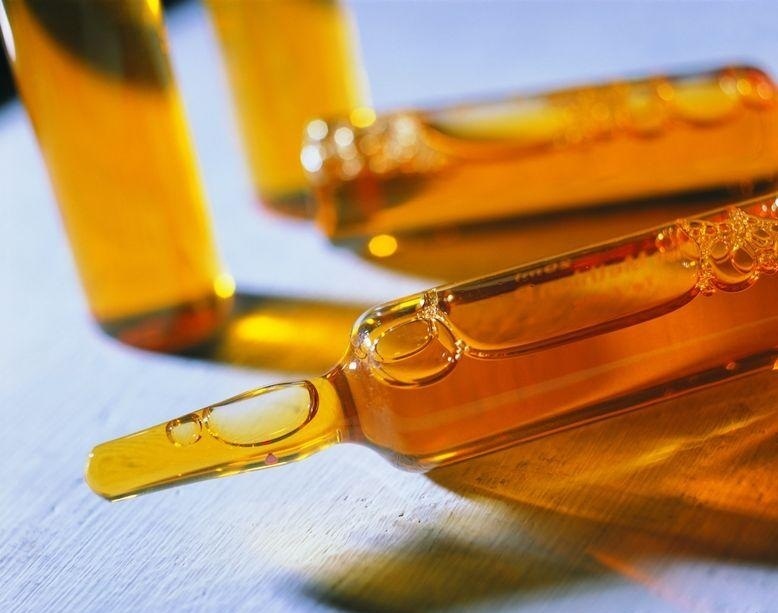| Age of children | Title vaccinations | Procedure | Note( in violation of the schedule) |
| newborn in the first days of life | first vaccination against hepatitis B | conducted in accordance with the instructions for the use of vaccines to newborns, including those from high-risk groups: born to mothers- carriers of HBsAg;patients with viral hepatitis B or who underwent viral hepatitis B in the third trimester of pregnancy;not having results of examination for markers of hepatitis B;drug addicts, in families in which there is a carrier of HBsAg or a patient with acute viral hepatitis B and chronic viral hepatitis( hereinafter - at-risk groups). | |
| Newborns on days 3 to 7 | Vaccination against tuberculosis | Carried out by newborn vaccines for the prevention of tuberculosis( for gentle primary immunization) in accordance with the instructions for their use. In the subjects of the Russian Federation with incidence rates exceeding 80 per 100 thousand population, and also in the presence of newborn patients with tuberculosis - a vaccine for the prevention of tuberculosis. | |
| Children in 1 month. | Second vaccination against viral hepatitis B | It is carried out in accordance with the instructions for the use of vaccines for children of this age group, including those at risk. | 1 month after the first |
| Children in 3 months. | first vaccination against diphtheria, pertussis, tetanus | is carried out in accordance with instructions for use of vaccines for children in this age group | |
| first vaccination against polio | Held vaccines for polio prevention( inactivated) in accordance with instructions for their use | ||
| children from 3 to 6 months. | The first vaccination against hemophilic infection | It is carried out in accordance with the instructions for the use of vaccines for children at risk: with immunodeficiency conditions or anatomical defects leading to a dramatically increased risk of Hib infection;with oncohematological diseases and / or for a long time receiving immunosuppressive therapy;HIV-infected or born from HIV-infected mothers;(children's homes, orphanages, specialized boarding schools( for children with psycho-neurological diseases, etc.), anti-tuberculosis sanitation facilities). | The course of vaccination against hemophilia infection for children aged 3 to 6 months.consists of 3 injections of 0.5 ml at intervals of 1-1.5 months. For children who have not received the first vaccination in 3 months, immunization is carried out according to the following scheme: for children aged 6 to 12 months.of 2 injections of 0.5 ml at intervals of 1-1.5 months.for children from 1 to 5 years single injection 0.5 ml |
| Children at 4.5 months | Second vaccination against diphtheria, pertussis, tetanus | Followed by instructions for the use of vaccines for children of this age group who received the first vaccination at 3 months. | 45 days after the first vaccination |
| second vaccination against polio | Held vaccines for polio prevention( inactivated) in accordance with instructions for their use | ||
| second vaccination against Haemophilus | infection is carried out in accordance with instructions for vaccine administered to children in this age group who received firstvaccination at 3 months. | ||
| Children at 6 months | Third vaccination against diphtheria, pertussis, tetanus | Followed by instructions for the use of vaccines for children of this age group who received the first and second vaccinations at 3 and 4.5 months.respectively | 45 days after the second vaccination |
| Third vaccination against poliomyelitis | This vaccine is administered to children of this age group for poliomyelitis prophylaxis( live) in accordance with the instructions for their use. Children who are in closed children's pre-school establishments( children's homes, orphanages, specialized boarding schools for children with psychoneurological diseases, etc.), tuberculosis sanitation facilities) are vaccinated three times with vaccines for the prevention of poliomyelitis( inactivated) | ||
| . The third vaccination against viralhepatitis B | Followed by instructions for the use of vaccines for children of this age group, not belonging to the risk groups who received the firstand a second vaccination at 0 and 1 month.accordingly | After 6 months.after the onset of vaccination | |
| Third vaccination against hemophilic infection | It is carried out in accordance with the instructions for the use of vaccines for children who received the first and second vaccination at 3 and 4.5 months.respectively | 45 days after the second vaccination | |
| Children 12 months | Vaccination against measles, rubella, mumps | conducted in accordance with the instructions for use of vaccines to children in this age group | |
| fourth vaccination against hepatitis B | is carried out in accordance with the instructions for usevaccines for children at risk | Innovation 2016g. | |
| Children in 18 months. | First revaccination against diphtheria, pertussis, tetanus | Followed by instructions for the use of vaccines for children of this age group | One year after vaccination completed |
| First revaccination against poliomyelitis | Carried out to children of this age group with polio vaccine( live) in accordance with instructionson their application | After 2 months.after complete vaccination | |
| Revaccination against haemophilus infection | Revaccination is performed once for children vaccinated in the first year of life in accordance with the instructions for use of the vaccines | ||
| Children at 20 months. | Second revaccination against poliomyelitis | This vaccine is given to children of this age group for the prevention of poliomyelitis( live) in accordance with the instructions for their use | After 2 months.after the first revaccination |
| Children under 6 years | revaccination against measles, rubella, mumps | conducted in accordance with the instructions for use of vaccines to children in this age group who received the vaccine against measles, rubella, mumps | After 6 years after |
| vaccination Children 6-7 years | Second revaccination against diphtheria, tetanus | Conducted in accordance with the instructions for the use of toxoids with a reduced content of antigens to children of this age group | 5 years after the first revaccination |
| Children at age 7 | Revaccination against tuberculosis | Conducted by non-infected tuberculosis mycobacteria tuberculin-negative children of this age group with vaccines for tuberculosis prevention in accordance with instructions for their use | Children with Mantoux reaction |
| Children at 14 years | third revaccination against diphtheria, tetanus | is carried out in accordance with instructions for use toxoids with a reduced antigen content childrenAnna age group | After 7 years after the second booster |
| Third revaccination against poliomyelitis | To be given to children of this age group for poliomyelitis prophylaxis( live) in accordance with instructions for their use. | ||
| . Vaccination against tuberculosis. | . Vaccines for tuberculosis prevention are administered to non-infected tuberculosis mycobacteria for tuberculosis-negative children of this age group in accordance with theirapplication | Children with negative Mantoux reaction | |
| Children from 2 months.up to 5 years | Vaccination from pneumococcal infection | It is carried out in accordance with the instructions for the use of vaccines annually to these categories of citizens. Preventard vaccine is used. In the first year of life, the vaccination is carried out twice with an interval of at least 2 months, starting at 2 months, revaccination at 12-15 months. The minimum interval between vaccination and revaccination is 4 months. If vaccination with this vaccine is given after 12 months - vaccination is done twice with an interval of 2 months, a booster is not required. After 2 years of age vaccination Prevenar is done once, no revaccination is required. |
In this article, you will learn what vaccinations and at what age your child needs to do.
Contents
- Russian Immunization Schedule 2016
- Table: Vaccination schedule for children under 14 years of 2016.
- Russian Immunization Calendar 2016 to children
- Russian Immunization Schedule 2016 to children under 3
- Table: Vaccination Calendar Kazakhstan 2016
- Table: Vaccination Calendar Ukraine 2016
- Is there a new vaccination on the vaccination calendar for 2016?
- Video: Vaccination Calendar( inoculations) of different countries - Dr. Komarovsky
Russian Immunization Schedule 2016
Ministry of Health annually revises and approves calendar inoculations . Changes are made in dependencies from epidemiological situation in country . In the calendar 2016g . was added fourth vaccination from of hepatitis in .
Table: Vaccination schedule for children under 14 years of 2016.
Vaccination schedule for Russia 2016 for children up to the year
As we see from the table, children under one year old should be vaccinated against the following diseases:
- of viral hepatitis B
- of tuberculosis
- diphtheria, whooping cough, tetanus
- polio
- measles, rubella, mumps
- Haemophilus infection
- pneumococcal infection
Vaccination schedule for Russia 2016 for children under 3 years
Children from one to three years of age should undergo revaccination for the following diseases:
- diphtheria, pertussis, tetanus
- polyomaJelita
- hemophilic infection pneumococcal infection
 Table: Immunization Schedule Kazakhstan 2016
Table: Immunization Schedule Kazakhstan 2016
Kazakhstan approved the following immunization schedule for children at 2016.
| Age | Vaccination against |
| 1-4 day life | Tuberculosis Hepatitis B Polio( OPV) |
| 2 months | Hepatitis B Polio( OPV) diphtheria, pertussis, tetanus( DPT) |
| 3 months | Polio( OPV) Pertussis, diphtheria, tetanus( DTP) |
| 4 months | Hepatitis B Poliomyelitis( OPV) Pertussis, diphtheria, tetanus( DTP) |
| 12-15 months | Measles Parotitis |
| 18 months | Whooping cough, diphtheria, tetanus( DTP) |
| 7 years( class 1) | Tuberculosis Measles Diphtheria, tetanus( ADS) |
| 12 years | Tuberculosis |
| 15 years | Diphtheria( AD-m) |
| 16 years | Diphtheria, tetanus( ADS-m) |
| Every 10 years | Diphtheria, tetanus( ADS-m) |

Table: Vaccination Calendar Ukraine 2016 year

| Age | Vaccination from | |
| 1 day | Hepatitis B | |
| 3-5 day | Tuberculosis( BCG) | |
| 1 month | Hepatitis B | |
| 3 months | Pertussis, Diphtheria, tetanus( DTP) Polio Hemophilus infection | |
| 4 months | Whooping cough,(DTP) Poliomyelitis Hemophilus infection | |
| 5 months | Pertussis, Diphtheria, tetanus( DTP) Polio 6 days | Hepatitis B |
| 12 months | Cory, rubella, mumps( PDA) | |
| 18 months | Pertussis, Diphtheria(DTP) Poliomyelitis Hemophilus infection | |
| 6 years | Pertussis, Diphtheria, tetanus( DTP) Poliomyelitis Cory, rubella, mumps( PDA) | |
| 7 years | Tuberculosis( BCG) | |
| 14 years | Diphtheria, tetanusADF) Polio |
 Is there a new vaccination on the vaccination calendar for 2016?
Is there a new vaccination on the vaccination calendar for 2016?
Yes, the Ministry of Health revised the vaccination schedule and decided to pay more attention to vaccinating children against hepatitis B. So, in 2016, the fourth vaccination against hepatitis B was given to children aged 12 months. This vaccination is carried out in accordance with the instructions for the use of vaccines for children at risk.
For more details about vaccination, see the "Vaccination and vaccination of children".What do parents need to know about vaccination and vaccination of children?
